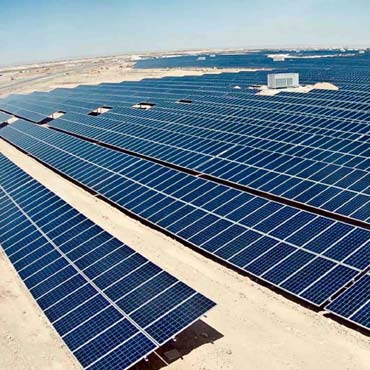Solar power is the conversion of energy from sunlight into electricity, either directly using photovoltaics (PV), indirectly using concentrated solar power, or a combination. Concentrated solar power systems use lenses or mirrors and tracking systems to focus a large area of sunlight into a small beam that is heated up to generate steam pressure for running turbines. Photovoltaic cells convert light into an electric current using the photovoltaic effect. Photovoltaics were initially solely used as a source of electricity for small and medium-sized applications, from the calculator powered by a single solar cell to remote homes powered by an off-grid rooftop or on ground PV system. Commercial concentrated solar power plants were first developed in the 1980s. With remarkable success in the development of solar energy technology, the cost of solar electricity systems has fallen over years and consequently the number of grid-connected solar PV systems has grown into the millions and utility-scale solar power stations with hundreds of megawatts are being built. Solar PV is rapidly becoming an inexpensive, low-carbon technology to harness renewable energy from the Sun. One of the largest photovoltaic power stations in the world is the 850 MW Longyangxia Dam Solar Park, in Qinghai, China. In 30 years’ time, i.e. by the year 2050, The International Energy Agency projected that solar photovoltaics and concentrated solar power would contribute about 16 and 11 percent, respectively, of the worldwide electricity consumption, and solar would be the world's largest source of electricity.
|
|
Solar Energy | >> Solar Energy History and Development |




